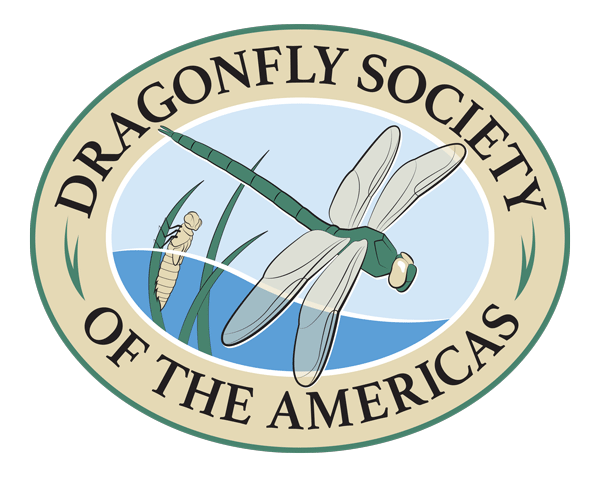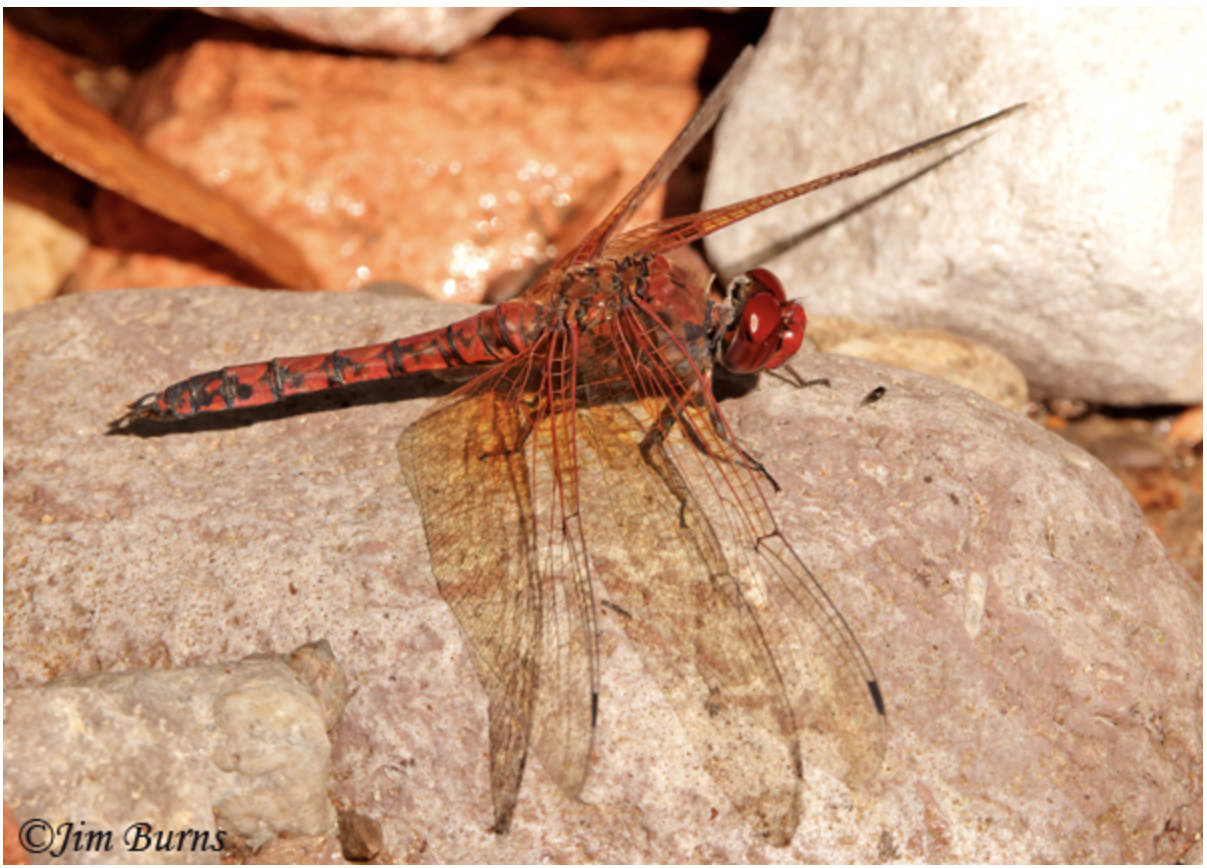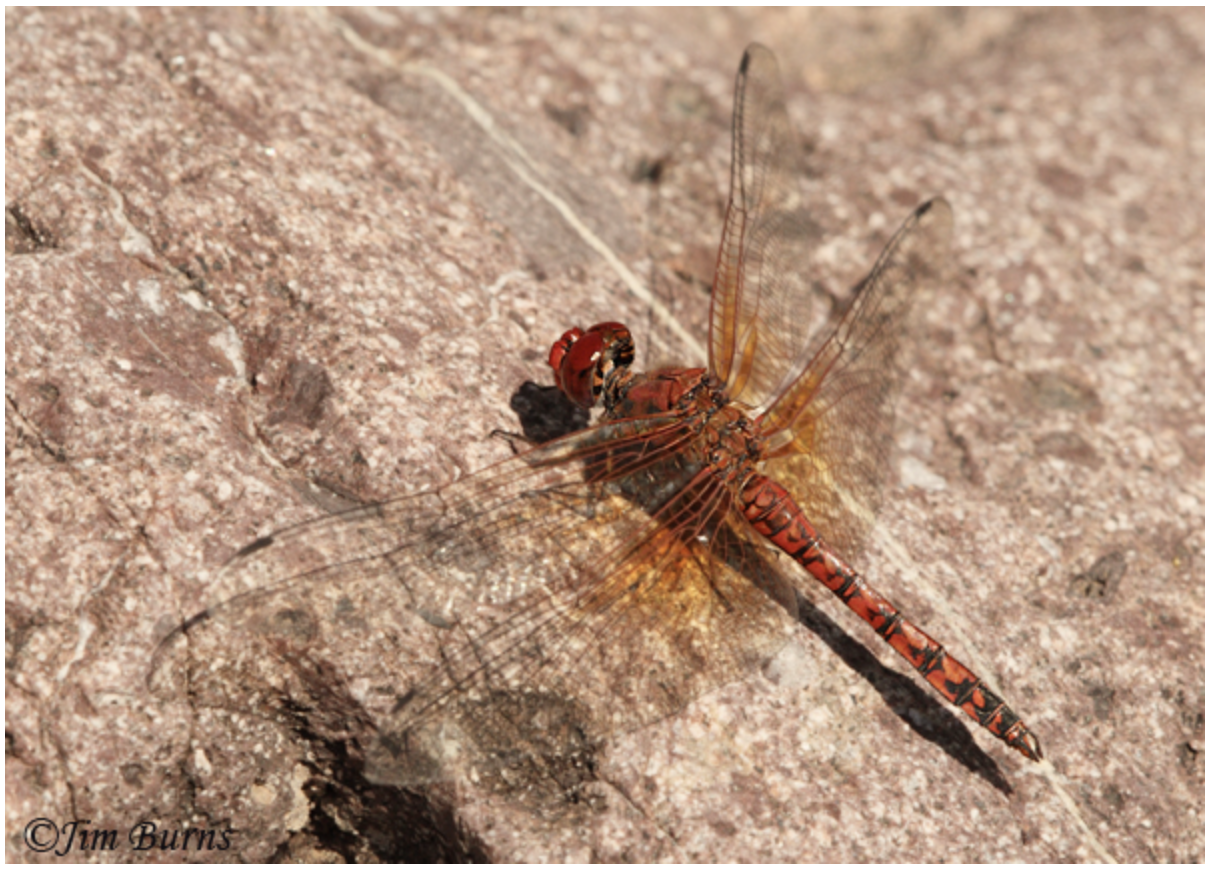May Species of the Month: Pacific Spiketail (Cordulegaster dorsalis)
Male Pacific Spiketail (Cordulegaster dorsalis), photo copyright Ray Bruun (2007), Shingletown, Shasta County, CA.
Our May Species of the Month is the Pacific Spiketail (Cordulegaster dorsalis), a large dragonfly in the family Cordulegastridae. At 70-85 mm long (around 3 inches or more), it is found in forest streams along the Pacific coast and in the Baja, California area —and sometimes, in areas you might not expect! Read on to learn about dragonfly chaser Kathy Biggs’ adventure with this species.
How the Ovipositing of the Pacific Spiketail Evaded Our Detection for 13 Unlucky Years
When you write a field guide, people expect you to be an expert. I am the author of Common Dragonflies of California, A Beginner’s Pocket Guide, and my husband Dave and I give dragonfly programs in California. The Pacific Spiketail is an especially beautiful species, with its bright blue eyes and dramatic black and yellow markings.When I show the slide of this species during my PowerPoint programs, I talk about its unique ovipositing strategy. The female holds her abdomen perpendicular to the ground, and oviposits—not so much into the water— as into the shallow muddy margin of a flowing small creek.
However, Dave and I had not actually seen this behavior. When I mentioned this in my programs, folks started sending me photos of ovipositing Pacific Spiketails. Some even sent video clips! Year after year, we’d give programs and admit we had never seen the activity. Folks in our “CalOdes'' discussion group would gently chide us about it. It was getting to be embarrassing; especially after a dozen years went by.
Female Pacific Spiketail (Cordulegaster dorsalis), photo copyright Kathy Biggs, Sonoma County, CA (undated).
The Thirteenth Year
Year 13 was an unlucky year for us. Dave fell off the 10-foot high roof of our summer home in California’s Cascade Mountains, fracturing his pelvis. He ended up in the hospital for a few days, and had to use a walker to help him get around when we returned to our San Francisco Bay area home, where he recuperated. I was scheduled to give a program during this time, but without Dave’s help. Dave is my “right hand man, projector operator, net provider, and the love of my life.” That’s how I introduce him! This time, I gave the program alone and— once again— I had to admit to my audience to never having witnessed the Pacific Spiketail ovipositing.
Made in the Shade
After a few weeks, we returned to our mountain home, and then to the hospital to return Dave’s walker. The hospital is in a marshy area, and as mitigation, they had put in a pond with small entry and exit creeks. When we got to the hospital, I said to Dave, “It’s so lovely out, and we’ve made the half hour drive to get here, let’s walk around the grounds and see what dragonflies we can find.” Dave agreed.
Ovipositing Pacific Spiketail (Cordulegaster dorsalis), photo copyright Don Roberson, Siskiyou County, CA, (2007).
Voila! There she was!! A female Pacific Spiketail ovipositing! We quickly realized why we’d never seen this before. She was ovipositing in the shade, and we’d always looked in the sunny areas. Although this wasn’t our first sighting of Cordulegaster dorsalis, it was our first experience with their unique ovipositing behavior.
I was finally able to give dragonfly programs and talks and mention Spiketails without cringing! And “13” didn’t seem as unlucky as it had at the beginning of that year.
Our May guest blogger is Kathy Biggs, who has been a nature lover all her life. When she built a wildlife pond in her Sebastopol, Ca backyard in 1996, dragonflies arrived and she found her true passion. Wanting to share her passion, she developed websites for her wildlife ponds, California Dragonflies, Southwest Dragonflies and most recently A First Guide to the Dragonflies of Jalisco. The websites matured and grew into Kathy's becoming the author of California’s first Dragonfly Guide, Common Dragonflies of California, the Southwest’s first dragonfly guide, Common Dragonflies of Southwest, a dragonfly color and learn book and her latest publication, Dragonflies of the Greater Southwest. Kathy manages the Groups CalOdes and Building Ponds for Wildlife. And is the vetter for CA on Odonata Central. She hopes she can inspire you to get to know the dragonflies and the wetlands that support them.













































